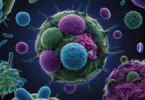Staff Writer for Wake Up World
In recent years, the use of ketamine, an old anesthesia drug, for treating severe depression has transitioned from a novel idea to a widely accepted practice. However, as the application of ketamine broadens, numerous questions about its efficacy, patient suitability, and the balance of costs versus benefits remain. New research aims to shed light on these areas, offering hope and guidance for those grappling with treatment-resistant forms of depression and bipolar disorder.
Unveiling Ketamine’s Promise
The Journey from Anesthesia to Depression Treatment
[pro_ad_display_adzone id=”110028″]
Ketamine, initially known for its use in anesthesia, has shown remarkable efficacy in alleviating severe depression symptoms, especially in individuals for whom other treatments have failed. Clinics across the United States have started offering ketamine infusions, with some providing a newer, nasal spray version. Despite its growing popularity, the question of why ketamine benefits some patients significantly while leaving others unchanged persists.
Groundbreaking Findings from the Bio-K Study
The recent Bio-K study, involving 74 participants across clinics in Michigan, Maryland, and Minnesota, reveals ketamine’s potential to induce remission in severely depressed or bipolar individuals. After just three ketamine infusions over 11 days, 52% of participants achieved remission, while an additional 15% experienced some improvement. Remarkably, half of the participants with frequent suicidal thoughts reported a significant reduction in these impulses.
“These participants are very representative of the sickest patients we see,” notes Sagar Parikh, M.D., a psychiatrist at University of Michigan Health and the study’s leader. The study’s outcomes underscore ketamine’s ability to offer rapid relief, with a strong initial response being a key predictor of treatment success.
Understanding Ketamine’s Impact
The Quest to Predict Treatment Response
A critical focus of the Bio-K study is identifying biomarkers that could predict a patient’s likelihood of benefiting from ketamine. By analyzing blood samples for specific molecules, the research aims to distinguish between potential responders and non-responders, guiding treatment decisions and improving outcomes.
From Research to Clinical Application
The positive results from the Bio-K study have propelled the establishment of a dedicated IV ketamine clinic at University of Michigan Health. This clinic serves as a referral center for patients with treatment-resistant depression, providing a new beacon of hope for those who have exhausted other treatment options.
Navigating Challenges and Costs
Insurance Coverage and Accessibility
The widespread adoption of ketamine therapy faces significant hurdles, including inconsistent insurance coverage and high out-of-pocket costs for patients. While some health insurers partially cover ketamine treatments, others, including Medicare and Medicaid, do not, limiting access for those in need.
IV Ketamine vs. Nasal Spray
The introduction of esketamine, a nasal spray form of ketamine, offers an alternative delivery method. However, deciding between IV infusions and nasal spray treatments presents a dilemma for clinicians and patients alike. Ongoing research aims to directly compare the efficacy of these two approaches, potentially influencing future insurance coverage decisions.
Practical Tips for Navigating Treatment Options
For individuals considering ketamine therapy for severe depression, the following tips may help navigate the journey:
- Consult with a Specialist: Seek advice from a mental health professional experienced in ketamine therapy to determine if it’s a suitable option for your situation.
- Explore Insurance Coverage: Investigate your insurance plan’s coverage for ketamine treatments and inquire about financial assistance programs.
- Consider All Treatment Options: Discuss both IV and nasal spray ketamine treatments with your provider to understand the pros and cons of each.
- Stay Informed: Keep up with the latest research and developments in ketamine therapy to make informed decisions about your treatment.
As the scientific community continues to explore ketamine’s therapeutic potential, patients and clinicians alike are hopeful for more definitive answers. By bridging the gap between research and clinical practice, the path to relief for those suffering from severe depression becomes clearer, offering a glimmer of hope where once there was none.
Journal Reference:
- Clinical outcomes in the biomarkers of ketamine (Bio-K) study of open-label IV ketamine for refractory depression. Journal of Affective Disorders, 2024; 348: 143 DOI: 10.1016/j.jad.2023.12.033
About the Author
Lily Anderson is an enthusiastic writer and curious investigator of the latest developments in science. Driven by a strong desire to learn, she has a knack for simplifying complex concepts into engaging stories, making science accessible and interesting to a broad audience. Lily’s work is important for connecting specialists with the general public, sparking wonder and fostering meaningful conversations about new scientific discoveries.
[pro_ad_display_adzone id=”110027″]







